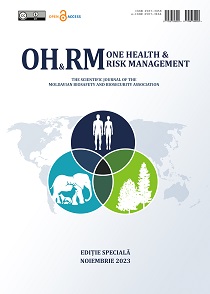Abstract
Introduction. Tick-borne encephalitis (TBE) is a significant zoonotic disease found in endemic areas. It is the most common viral cause of central nervous system diseases in humans and is caused by the tick-borne encephalitis virus (TBEV). Each year, thousands of cases are reported in Europe and Asia. Most TBEV infections in humans are asymptomatic, with an incubation period typically ranging from 7 to 14 days. Severe disease with neurological manifestation (i.e., aseptic meningitis, encephalitis, or meningoencephalomyelitis/radiculitis) is the most common clinical symptom of TBEV infection in the second phase of the disease. Tick-borne encephalitis virus is an arboviral flavivirus (enveloped, positive-sense, single-stranded RNA) with three accepted subtypes: European, Far Eastern, and Siberian. Additionally, two subtypes are known and have been proposed: Baikalian and Himalayan. Infections with the Far Eastern TBEV subtype are generally more severe and have a higher fatality rate than those with other subtypes.
Aim. This study aimed to design a one-step RT-PCR to detect TBEV in human samples.
Material and methods. Six TBEV strains of human origin were selected for primer design. Online platforms such as NCBI GenBank, Clustal Omega, and NCBI Primer-BLAST were used for primer design. A 175-bp fragment of the 3′ non-coding region and a part of the capsid protein of the TBEV genome were targeted for primer design. The forward and reverse primers were designed as 5′-GCGTTTGCTTCGGA-3′ and 5′-CTCTTTCGACACTCGTCGAGG-3′, respectively. Human-origin TBEV samples (European, Far Eastern, and Siberian) with different concentrations, including stock and five 10-fold serial dilutions, were tested. For detection, a probe labeled with HEX (HEX-ACAGCTTAGGAGAACA AGAGCTGGGGATGG-BHQ1) was employed. One-step TaqMan RT-PCR was performed in a total reaction volume of 25 μL, including a negative control.
Results. The laboratory diagnosis of TBE presents unique challenges due to the limited availability of commercial molecular tests for TBEV detection. Furthermore, the high viremia levels are typically detectable only at the onset of the disease's first phase when the symptoms are non-specific to TBEV infection. PCR testing can be instrumental in diagnosing TBEV cases with atypical clinical presentations or confirming a diagnosis in patients with inconclusive serological results. The primers and probes developed in this study exhibited a high level of specificity for TBEV detection. Positive results were consistently observed within the range of Ct values from 20 to 40. Importantly, these primers did not yield any cross-reactivity with other flaviviruses, including the Usutu virus, Yellow Fever virus, West Nile virus, and Chikungunya virus.
Conclusions. The set of primers and probes designed for one-step TaqMan RT-PCR was found to be specific and sensitive for the detection of TBEV. This method could be helpful for the rapid and accurate diagnosis of TBEV infection in patients and for tracking the spread of the virus in the natural foci. PCR testing for TBEV is not widely available, and developing in-house molecular tests will strengthen laboratory diagnosis of viral infections and support preparedness for potential disease outbreaks.
|
 Views: 122|
|
Views: 122|
|
This work is licensed under a Creative Commons Attribution 4.0 International License.

